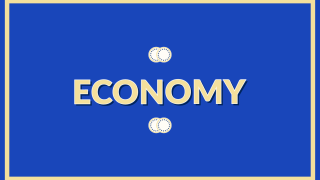At the Guilin Tiger Zoo in China, one walks a few meters from the most fearsome animals in the world. Different from traditional zoos, in which the animals tend to be passive, at Guilin everything is designed for the animals to preserve, to the extent possible, their natural habitat. They are not fed, but rather, are kept in a space in which they single out, kill, and eat the animal they crave. One proceeds along the side of a moat that, at times, feels terribly narrow, to the extent that it appears that the tigers could jump over to the other side at any instant. The sensation of impotence and fear is impressive. This, exactly this, is what many Mexican feel when they observe the way the government, above all the immune bureaucracy that lives in a world of impunity, harasses and lies in wait for them in permanent fashion. The country has everything to be a rotund success, were it not for the bureaucracy strangling it.
In the Eighties, when the country experienced one of its worst moments economically, disputes within the Cabinet and within the government were about how to confront the crisis. Some wanted more government, some less; some wanted to change the logic of the productive sector, others, to return to the way it had been twenty or thirty years prior. The country was adrift, but discussions were essentially conceptual in nature, philosophical. Within the context of this marasmus, many companies sought ways out of their own problems. Although many were highly indebted, there were many businesses devoted to finding ways out of the gridlock. The internal market was excessively depressed, but numerous entrepreneurs perceived extraordinary opportunities through exportation. However, the more they attempted this, something held them back from acting.
In reality, one of the central problems of the Mexican economy is precisely that, from the Sixties, the internal market ceased being sufficiently large for enterprises to manufacture competitive products. Exportation was a natural outlet. However, the entire regulatory structure was designed to control, and not to foster, the growth of production, and much less, that of productivity. Instead of expediting the course, there were permit requirements for everything; to import and to export. Even to invest.
Despite the crisis and the severe recession that the country was undergoing, the restrictions persisted. There was a company that manufactured stoves at a competitive price and quality. Nevertheless, the products had a defect that rendered them unviable for export: the enamel used for finishing the stoves was not heat-resistant. The enamel represented barely 10% of the value of the stove, but without this finishing, it remained outside of the export market. However much the company resorted to the bureaucracy for permission to import the suitable paint with the very foreign currency that the company itself would generate with its exports, the response was always no. In fact, negative responses were so great in number that, little by little, they ended up provoking advancement of the reformers in the Presidential Cabinet. Opposition to any change was so overwhelming (and absurd) that the opening that resulted was much greater than that which its own promoters had imagined as feasible at that moment.
The obstacles were enormous, but little by little the way was paved. Some themes were concerned with the then-operating Secretary of Commerce and Industrial Development (SECOFI), the lair of prohibitionist regulators. But the problems were not limited to permits. To obtain the Value-added tax (IVA) rebate to enable exporters to be competitive required an enormous effort by the Finance Secretary, ever suspicious of any possibility of success. However, in the end, the difficulties involved in the export of manufactured goods were resolved. Although the opening was not as wide-ranging as its critics suppose (because monopolies persist in services and sectors not obliged to compete because they are regulated), the reality is that Mexico became a manufacturing power and today we are a hyper-competitive country in various extraordinarily successful sectors.
The scenario of services at present is much like that which occurred with the manufacturers in the Eighties: everything conspires against exportation, everything is an obstacle. The opening of the Eighties was limited to goods and did not include services, an area in which some countries, particularly India, has achieved spectacular growth rates. In contrast with manufactured goods, services offer opportunities that are much vaster for an enormous number of Mexicans. While manufacturing is concentrated on ever more sophisticated enterprises, typically large (and their suppliers), services depend, in many cases, on no more than organized persons. That is, in the services ambiance, it would be possible to imagine new opportunities by small and medium businesses in which no monumental up-front investment monies are required. In services, there is a great opportunity for thousand or millions of potential new entrepreneurs.
The case of India is illustrative. In a few years, India has achieved the export of the most varied services, employing millions of Indians. Some include the call centers that all banks, credit card companies, and reservations systems utilize, but there are others that are more specialized: accountants; x-ray readers; administrative services, support for the installation and operating of appliances, computers, and other items. In India, a few lines of business employ millions of persons.
Mexico has two challenges to tackle. One is relatively simple, although this is not to say that the customs, fiscal, and employment, etc., bureaucracy will make it easy: to pave the way for the possibility of expanding the world of services for exportation, which will require changes in regulations and laws in order to generate in the end the necessary conditions of flexibility, above all fiscal and labor, which are anathema for the bureaucracy and those who benefit from the status quo. The remaining challenge consists of liberalizing and submitting to competition the services that already exist in the country and that comprise the themes that are avoided daily: telephone; energy; electricity, and, perhaps someday, the bureaucracy itself. If we want competitive services, it is necessary to generate an environment that allows them to be.
Manufacturing has demonstrated its potential. Now is the time to do the same with services.
Services






Comments